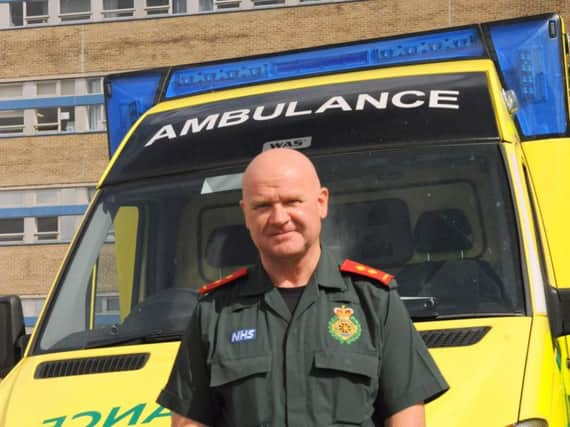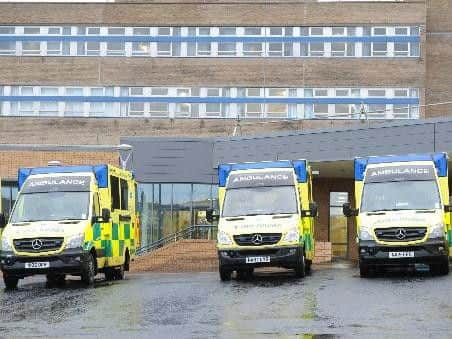Ambulance pilot scheme set to cut the load on Sunderland A&E by almost 2,000 attendances per year


The Paramedic Pathfinder will train NEAS ambulance staff to use a new clinical triage tool, which helps them to make more accurate face-to-face patient assessments before choosing the most appropriate place for treatment.
As well as A&E departments, this could include referral to a patient’s GP, being managed at home or by accessing Sunderland’s urgent care services, such as an urgent care centre or the Recovery at Home Team.


Advertisement
Hide AdAdvertisement
Hide AdApproximately 80% of patients in the Sunderland area who get an ambulance are taken to the emergency department at Sunderland Royal Hospital, which is above the regional average,
The new pilot is expected to reduce this figure by five patients per day.
Funded by Sunderland Clinical Commissioning Group (CCG), the The Paramedic Pathfinder triage tool works by recognising symptoms, rather than making a definitive diagnosis, using a flow chart.
A first in the North East, staff will use a face to face clinical triage tool to support their decision-making, mirroring how emergency departments operate across the country.


Advertisement
Hide AdAdvertisement
Hide AdIt’s estimated the scheme could save the NHS around £650,000 annually.
NEAS consultant paramedic Paul Aitken Fell said: “The Paramedic Pathfinder scheme will support our ambulance clinicians even further to make the most appropriate and safe decisions about patients’ care, which will support Sunderland’s system of integrated care.
“Currently our ambulance clinicians will err on the side of caution, taking patients with non-critical conditions to A&E based on their diagnosis.
"This system will ensure patients get the right care, in the right place, at the right time by giving our paramedics the confidence and endorsement to choose another option.
Advertisement
Hide AdAdvertisement
Hide Ad"As well as reducing the load on Sunderland’s A&E departments, this will help improve the patients’ experience by providing care tailored exactly to their needs.”
Jeannie Henderson, from Sunderland CCG, said: “There has been a 47% increase in emergency admissions over the past fifteen years, costing the NHS £12.5billion.
"We need to look at ways to reduce the amount of patients being inappropriately transported to emergency departments and are confident this pilot scheme will prove extremely successful in doing just that.
"It has already been adopted by a number of other ambulance services across the UK with the overarching purpose of avoiding long and inappropriate transfers to emergency departments and maximising the use of the new urgent care centres.”
Advertisement
Hide AdAdvertisement
Hide AdNorth East Ambulance Service NHS Foundation Trust (NEAS) covers 3,200 square miles across the North East region. It employs more than 2,500 staff and serves a population of 2.7 million people by handling all NHS 111 and 999 calls for the region, operating patient transport and ambulance response services, delivering training for communities and commercial audiences and providing medical support cover at events.
This is the latest project operated by NEAS which is designed to reduce the burden on emergency services. Others include the introduction of Advanced Practitioners, who offer a more in-depth triage and treatment for urgent care cases, and a system called Flight Deck, which helps hospitals manage their demand by providing real time updates on system-wide pressures.
In 2015/16 the service answered 1.160 million emergency 999 and NHS 111 calls, responded to 295,855 incidents that resulted in a patient being taken to hospital, treated and discharged, 19,949 patients with telephone advice and treated and discharged 85,021 patients at home. In the same year, emergency care crews reached 132,948 Red incidents within the national target of 8 minutes.